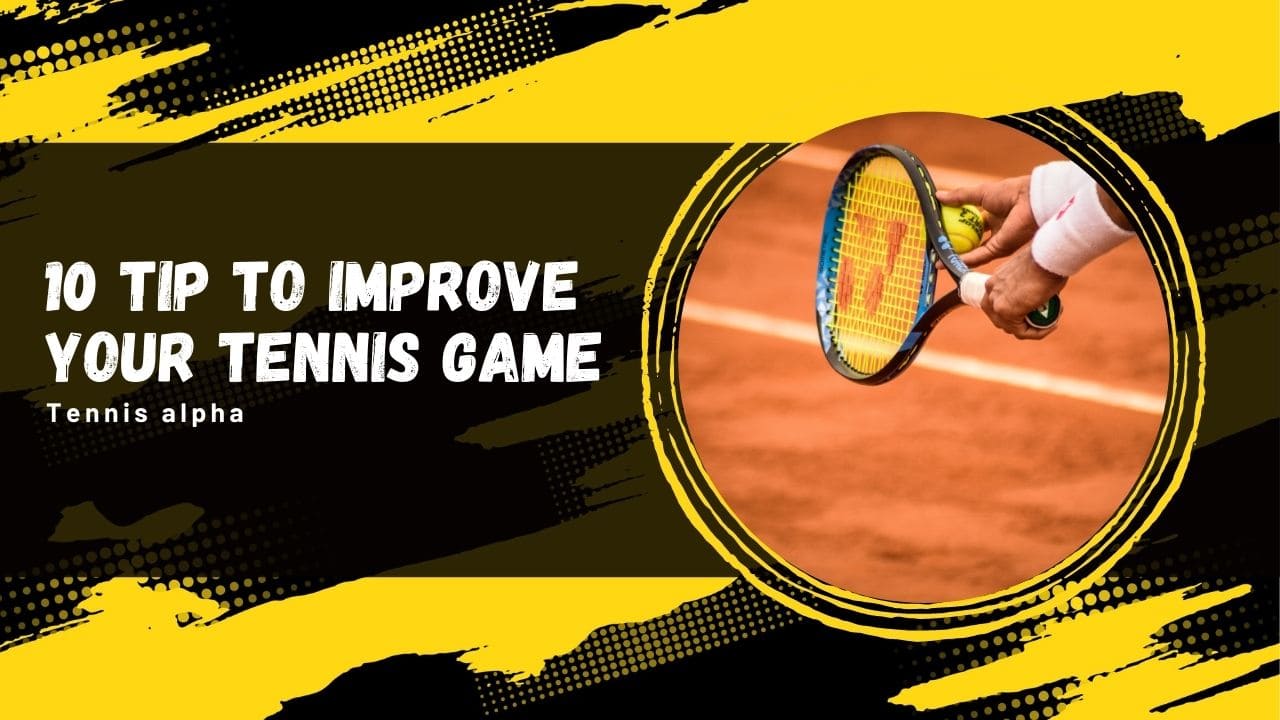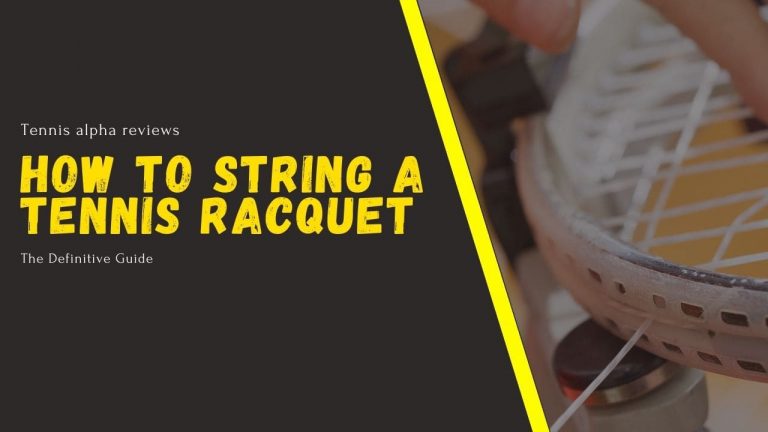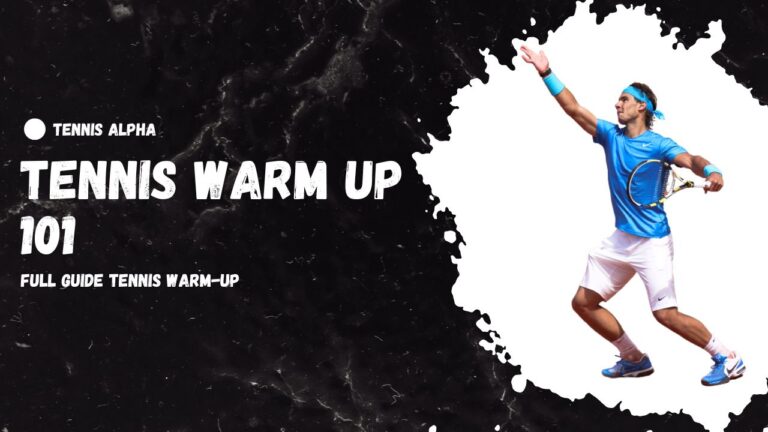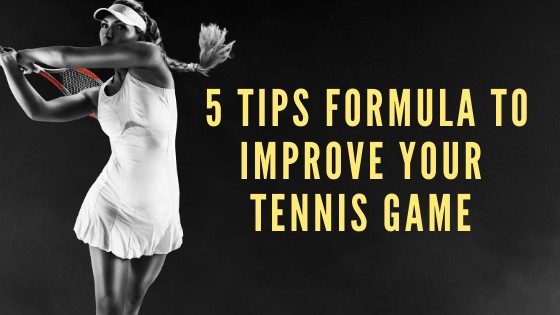
You can improve your tennis game quickly by a better knowledge of the game, using a more accurate and appropriate tactic, and some simple and proven tactical advice.
Our guiding principle on the tactical level is to consider that success in tennis comes through consistency and control of the risk taken on each shot.
Our keywords will therefore be: CONSISTENCY, CONTROL, REALISM to improve your tennis game.
Indeed, we think that all the players we address, who spend 1 to 3 hours per week on tennis, wanting to imitate Federer, Nadal, Djokovic… in the variety and sophistication of their shots, is not the best way to improve your tennis game.
On the contrary, we want everyone to be able to “play tactically and technically correct” according to their level and abilities.
Several thousand players have already tried this method with us and their tennis has rapidly evolved.
Tip 1 Basic Tactics To Improve Your Tennis Game
On the serves:
You are on serve: make your first and second serves with very close movements.
You are on the return of serve: on the return of services do not try to win the point in one stroke.
You are at the back of the court:
Send the ball back without taking too many risks and wait for your opponent to send a short ball back to you, at this moment, there are 2 possibilities:
- By far the best in our opinion: take advantage of this short ball to volley on your opponent’s weak point (which is often his backhand).
- A much riskier tactic: if you have a really strong shot, take advantage of the short ball to finish the point.
Your opponent is on the volley:
- On your strong side, try to make him play a difficult volley (don’t look for the winning passing)
- On your weak side (backhand ?) play a lob.
You are on the volley:
- On a difficult ball, play a waiting volley – long if possible – on your opponent’s backhand (or on his weak point).
- On an easy ball, play a short cross-court volley to score the point.
Tip 2 Recognize the tactical situation
Before playing a move, it is essential to know if you are in an attack, defense, or neutral situation.
Attack:
You are in a position to hit the ball well within the boundaries of the court.
- If you have a really strong shot, you can try to “hurt” your opponent.
- If not, take advantage of this situation to start moving him, to open a gap in his game.
- If a short ball allows it, go to the net.
Neutral:
- On a ball that doesn’t overrun you but doesn’t open up an angle, wait!
- Return a long ball that does not allow the opponent to attack. He may even be forced to deliver a short ball that gives you the opportunity to take the initiative.
Defense:
You are in trouble: “nothing goes right”.
- Your only objective must be to put the ball back into the opponent’s court without making a mistake.
- Above all, do not attempt a counter-attack, you must “break the fight” by playing a ball with a fairly high trajectory, curved, preferably diagonal (less risk of fouls).
Tip 3 No stupid mistakes!
Know how to recognize them and eliminate them from your game. Here are some examples:
First example
You are in an attacking position, you choose to “hurt” your opponent (so you have a really strong shot); you make the foul! SO WHAT, it’s not serious, it’s not a stupid foul. This fault is part of the normal percentage to accept (to try if you lead 40/0 or 40/15 for example…)
Second example
You are in a neutral position but you try to outflank your opponent and you make the foul; you have just made the STUPID FAULT, the one that can, in the counting of the points, make you lose the game.
Third example
You are in a neutral position, you try to play forward, and take the ball out of 50 cm or one meter. This is not a stupid mistake. You have respected your basic tactics
Fourth example
You are in a defensive position. Instead of breaking off the fight, you try to win the point and of course, you make the STUPID FALLS…
It is essential to eliminate these “stupid mistakes” from your game. Observe matches between players of all levels, those who win are those who do not make these types of mistakes.
Tip 4 Weakness
The only ambition is not to make a mistake!
- It is not advisable to try to win points with your weak point (often the backhand). This is not a realistic attitude.
- A piece of good advice is to make your weak point a regular stroke, not a brilliant one but a solid one. It is possible that later on, it will become, statistically, your strong point.
- Remember that your strong point is not effective if you alternate winning shots with mistakes.
- On your weak point, the answers will be adapted. For example, if your opponent comes to the net on your backhand, do a lob rather than a short cross-court passing shot.
Tip 5 Hit the ball in front of you…
That is, between you and the net. You must intercept the ball before it gets too close to you. Both at the back of the court and on the volley.
At the back of the court :
The energy you give to the ball comes from the speed with which your racket hits it, not the speed of the ball.
your racquet hits it, not your muscular strength. To give this speed, you should not move too far toward the ball or you will get stuck. Instead, position yourself away from the bounce to have room to throw your racquet in front of the ball (this is why “frail” women can give so much speed to the ball)
On the volley:
To block the ball, it is still in front of you that you will have the most (make it as if you wanted to push a car, a piece of furniture, or catch the ball with your bare hands)
Tip 6 Don’t! Advance To The Ball,
This is perhaps one of the most common pieces of advice heard in the courts. And yet it is not good advice for the backcourt!
- Indeed, the ball in the second part of its bounce has lost its initial speed, it is easier to control.
- That’s why we advise you to place yourself very far from the first bounce (5 or 6 meters) and to wait for the ball to come back down to play it.
- This way, you will hit the ball with good support, the weight of your body on your front leg.
- Afterward, your body balance being forward, you will naturally go to meet it to take it earlier and finally “advance on the ball”.
Tip 7 “Rest, at one time only!”
You have just finished your move, the ball is passing the net; it’s your opponent’s turn to play, finally, you can breathe and not make your legs work anymore.
- Wake up, you are in a bad dream! The only time you can breathe and stop working your legs is… between points!
- The only time when your feet are fixed on the ground is… when you hit the ball when you are well positioned in relation to the ball, and when you can take good support.
- When you watch a match, don’t follow the ball anymore but look at the legs of one player, you will notice that they never stop between two strikes (imagine a boxer who would have stopped in front of his opponent, it’s a guaranteed KO)
Tip 8 Service, Return of Service
1st service ball
- The server must gain an advantage in the rally.
- The returner must try to cancel this advantage by returning long to the center.
2nd service ball
- The server should prevent the launcher from gaining an advantage in the rally.
- The launcher should try to take this advantage. What better opportunity, in the vast majority of cases, than this obligatorily short and underworked ball, to push the opponent back to the back of the court? One should not try to win the point on a shot but only go to the net (tip N°11)
Tip 9 First serve: no ace but an improved second ball
How many aces do you make per match?
0, 1, 2, not more. So instead of indulging yourself very rarely and serving a pushed second ball, play an improved 2nd ball on the 1st serve.
What is your first-serve percentage?
30%, 40% maximum. Do as many very good 2nd or even 1st series players do and play consistently (80%), and this “first-second” ball will give you it for sure.
Aim for your opponent’s backhand
(or his forehand if he is very weak). The point will come easier than you think, and anyway, you won’t be able to be “assassinated” in the return.
Tip 10 How to make a good 2nd ball
By never serving the first ball! (at first…)
A good second ball is a ball that allows you not to make a double fault, but also, prevents the opponent from being in an attacking position.
- The best way to fulfill these 2 conditions is to have a worked 2nd ball.
- To work the ball, you must dare to rub it hard. If you are afraid, you don’t dare to rub and you don’t give enough effect. In order to acquire the confidence necessary for the success of the 2nd ball, do not try any more any 1st ball, but 2 identical balls. You will perform two similar gestures. On the first one, you will dare to rub your ball without restraint. On the second ball, you will repeat the same movement while ensuring a little more.
After a few months, when you have mastered your second ball, you will be able to start taking more risks with the first ball by giving a little less spin.
Summary
If you’ve always dreamed of playing tennis for a living, it’s important to keep in mind that the road to becoming a professional tennis player is long and difficult. First, you will need to get a tennis scholarship in high school or college.
Next, you will need to commit to playing improve your tennis game, getting good grades, and managing your time to make sure you have enough time to rest and practice.
Finally, you’ll need to decide if playing at a professional level is right for you. If it is, you’ll need to be able to commit to playing professionally for many years with no guarantee that you’ll ever be able to make a living from the sport.
If you’ve always been curious about playing tennis, there’s never been a better time to start! With these 10 tips and tricks, you’ll improve your tennis game and play tennis like a pro in no time.








